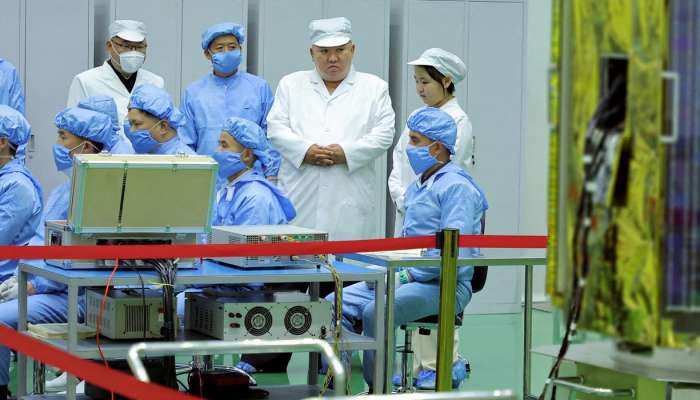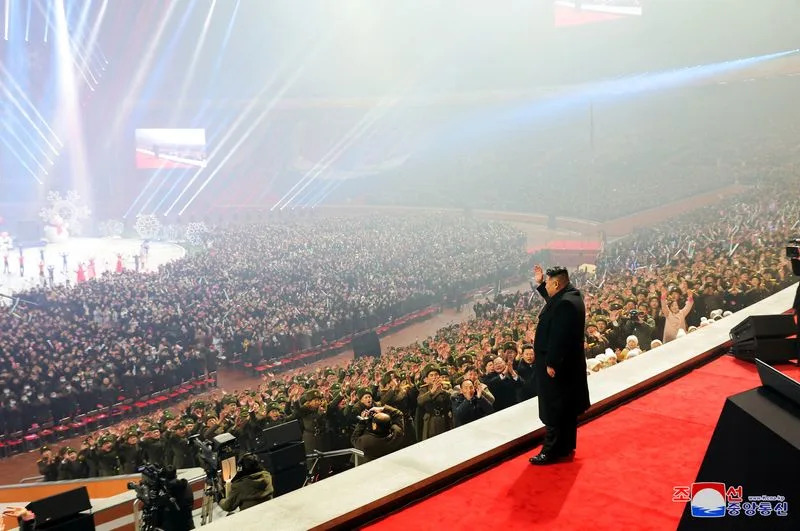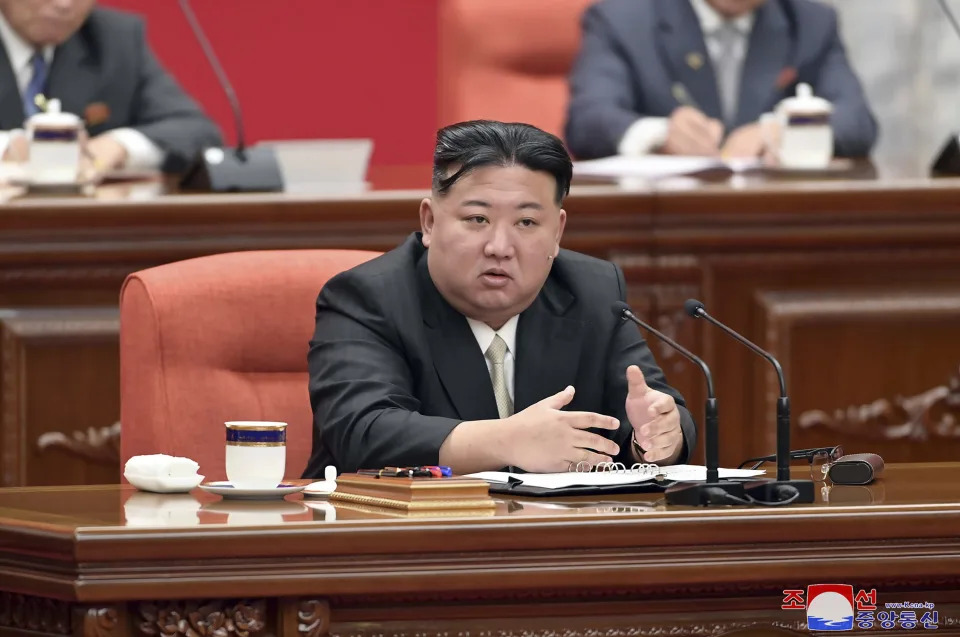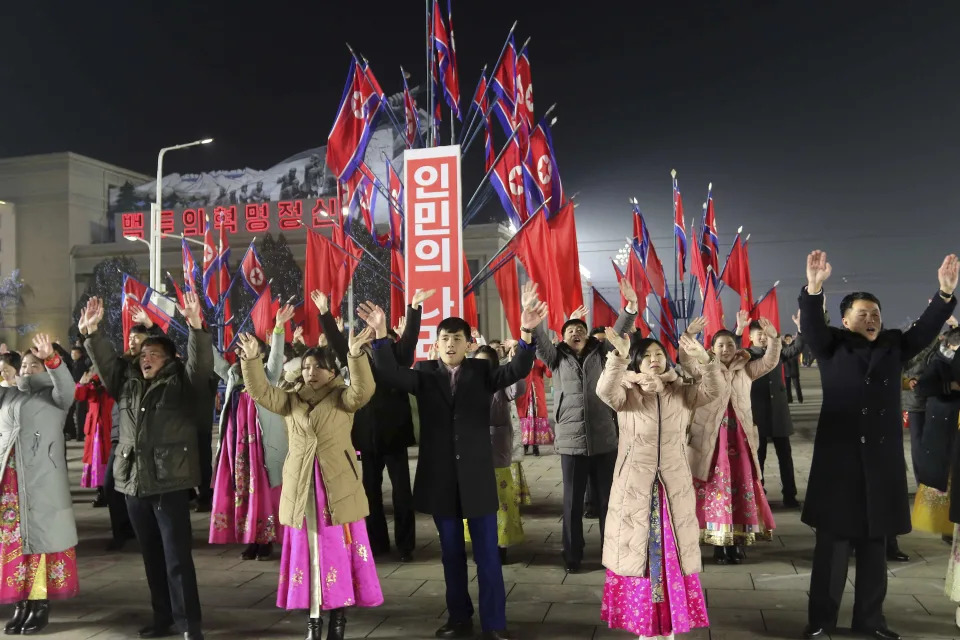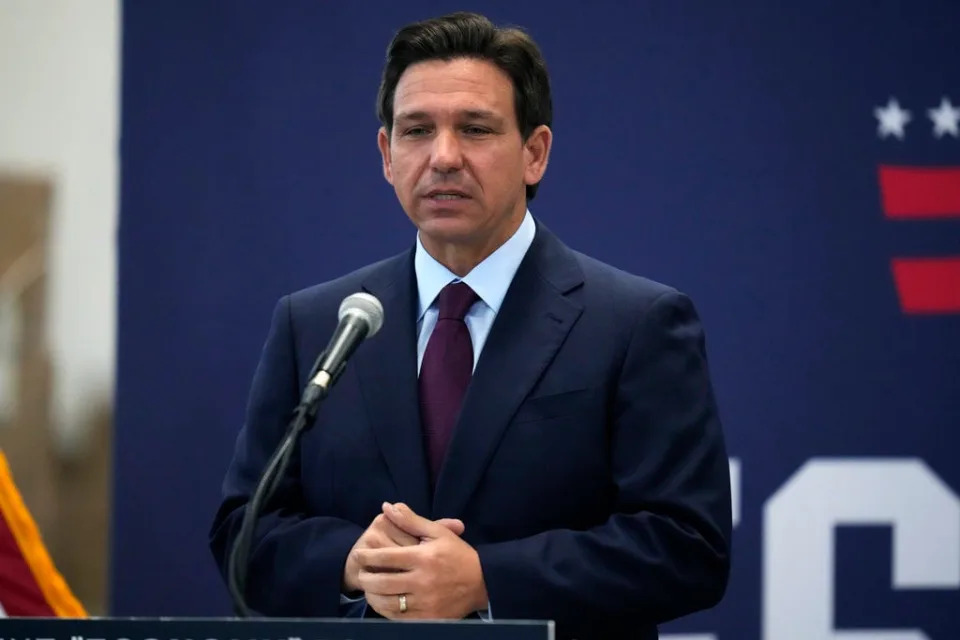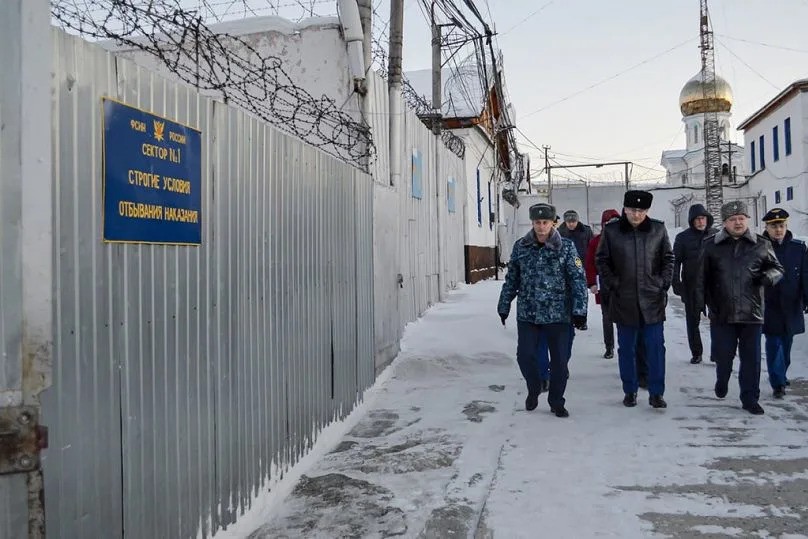New York Times – Opinion
Will the Economy Help or Hurt Biden ’24? Krugman and Coy Dig Into Data.
Paul Krugman and Peter Coy – December 31, 2023

Mr. Krugman is an Opinion columnist. Mr. Coy is an Opinion newsletter writer.Sign up for the Opinion Today newsletter Get expert analysis of the news and a guide to the big ideas shaping the world every weekday morning. Get it sent to your inbox.
Peter Coy: Paul, I think the economy is going to be a huge problem for President Biden in 2024. Voters are unhappy about the state of the economy, even though, by most measures, it’s doing great. Imagine how much unhappier they’ll be if things get worse heading into the election — which I, for one, think is quite likely to be the case.
Paul Krugman: I’m not sure about the politics. We can get into that later. But first, can we acknowledge just how good the current state of the economy is?
Peter: Absolutely. Unemployment is close to its lowest point since the 1960s, and inflation has come way down. That’s the big story of 2023. But 2024 is a whole ’nother thing. I think there will be two big stories in 2024. One, whether the good news continues and, two, how voters will react to whatever the economy looks like around election time.
Paul: Right now many analysts, including some who were very pessimistic about inflation last year, are declaring that the soft landing has arrived. Over the past six months, the core personal consumption expenditures deflator — a mouthful, but that’s what the Federal Reserve targets — rose at an annual rate of 1.9 percent, slightly below the Fed’s 2 percent target. Unemployment is 3.7 percent. The eagle has landed.
Peter: I question whether we’ve stuck the soft landing. I do agree that right at this moment, things look really good. While everyone talks about the cost of living going up, pay is up lately, too. Lael Brainard, Biden’s national economic adviser, points out that inflation-adjusted wages for production and nonsupervisory workers are higher now than they were before the Covid pandemic.
So let’s talk about why voters aren’t feeling it. Is it just because Biden is a bad salesman?
Paul: Lots of us have been worrying about the disconnect between good numbers and bad vibes. I may have been one of the first people to more or less sound the alarm that something strange was happening — in January 2022! But we’re all more or less making this up as we go along.
The most informative stuff I’ve seen recently is from Briefing Book, a blog run by former White House staff members. They’ve tried to put numbers to two effects that may be dragging consumer sentiment down.
One effect is partisanship. People in both parties tend to be more negative when the other party controls the presidency, but the Briefing Book folks find that the effect is much stronger for Republicans. So part of the reason consumer sentiment is poor is that Republicans talk as if we’re in a depression when a Democrat is president, never mind reality.
Peter: That is so true. And I think the effect is even stronger now than it used to be because we’re more polarized.
Paul: The other effect affecting consumer sentiment is that while economists tend to focus on relatively recent inflation, people tend to compare prices with what they were some time in the past. The Briefing Book estimates suggest that it takes something like two years or more for lower inflation to show up in improved consumer sentiment.
This is one reason the economy may be better for Democrats than many think. If inflation really has been defeated, many people haven’t noticed it yet — but they may think differently a little over 10 months from now, even if the fundamentals are no better than they are currently.
I might add that the latest numbers on consumer sentiment from several surveys have shown surprising improvement. Not enough to eliminate the gap between the sentiment and what you might have expected from the macroeconomic numbers, but some movement in a positive direction.
Peter: That makes sense. Ten months from now, people may finally be getting over the trauma of high inflation. On the other hand, and I admit I’m not an economist, I’m still worried we could have a recession in 2024. Manufacturing is soft. The big interest rate increases by the Fed since March 2022 are hitting the economy with a lag. The extra savings from the pandemic have been depleted. The day after Christmas, the Federal Reserve Bank of St. Louis said the share of Americans in financial distress over credit cards and auto loans is back to where it was in the depths of the recession of 2007-9.
Plus, I’d say the labor market is weaker than it looked from the November jobs report. (For example, temp-agency employment shrank, which is an early warning of weak demand for labor.)
Also, small business confidence remains weak.
Paul: Glad you brought up small business confidence — I wrote about that the other week. Hard indicators like hiring plans are pretty strong. Soft indicators like what businesses say about future conditions are terrible. So small businesses are, in effect, saying, “I’m doing OK and expanding, but the economy is terrible” — just like consumers.
I’m not at all sure when the Fed will start cutting, although it’s almost certain that it eventually will, but markets are already effectively pricing in substantial cuts — and that’s what matters for the real economy. As I write this, the 10-year real interest rate is 1.69 percent, down from 2.46 percent around six weeks prior. Still high compared with prepandemic levels, but financial conditions have loosened a lot.
Could there be a recession already baked in? Sure. But I’m less convinced than I was even a month ago.
Peter: The big drop in interest rates can be read two ways. The positive spin is that it’ll be good for economic growth, eventually. That’s how the stock market is interpreting it. The negative spin is that the bond market is expecting a slowdown next year that will pull rates down. Also, what if the economy slows down a lot but the Fed doesn’t want to cut rates sharply because Fed officials are afraid of being accused by Donald Trump of trying to help Biden?
Paul: I guess I think better of the Fed than that. And always worth remembering that the interest rates that matter for the economy tend to be driven by expectations of future Fed policy: The Fed hasn’t cut yet, but mortgage rates are already down substantially.
Peter: Yes.
Paul: OK, about the election. The big mystery is why people are so down on the economy despite what look like very good numbers. At least part of that is that people look not at short-term inflation but at prices compared with what they used to be some time ago — but people’s memories don’t stretch back indefinitely. As I said, the guys at Briefing Book estimate that the most recent year’s inflation rate is only about half of what consumers look at, with a lot of weight on earlier inflation. But here’s the thing: Inflation has come way down, and this will gradually filter into long-term averages. Right now the average inflation rate over the past 2 years was 5 percent, still very high; but if future inflation runs at the 2.4 percent the Fed is now projecting, which I think is a bit high, by next November the two-year average will be down to 2.7 percent. So if the economy stays where it is now, consumers will probably start to feel better about inflation.
Peter: Except that perceptions of inflation are filtered through politics. Food and gasoline are more expensive for Trump supporters than Biden supporters, if you believe what people tell pollsters. That’s not going to change between now and November.
The Obama-Biden ticket beat the McCain-Palin ticket in 2008 because voters blamed Republicans for the 2007-9 recession. Obama-Biden had a narrower win in 2012 against Romney-Ryan, and I think one factor was the so-called jobless recovery from that recession. That’s why Biden is supersensitive about who gets credit and blame for turns in the economy.
For the record, Trump might be president right now if it hadn’t been for the Covid pandemic, which sent the unemployment rate to 14.7 percent in April 2020. The economy was doing quite well before that happened. A lot of Republicans are nostalgic for Trumponomics, although I think the economy prospered more in spite of him than because of him. Thoughts?
Paul: Most of the time, presidents have far less effect on the economy than people imagine. Big stimulus packages like Barack Obama’s in 2009 and Biden’s in 2021 can matter. But aside from pandemic relief, which was bipartisan, nothing Trump did had more than marginal effects. His 2017 tax cut didn’t have much visible effect on investment; his tariffs probably on net cost a few hundred thousand jobs, but in an economy as big as America’s, nobody noticed.
Peter: Just speculating, but I wonder if when people say they trust Trump more than Biden on the economy, they’re feeling vibes more than parsing statistics. You know, “We need a tough guy in the White House!”
Paul: People definitely aren’t parsing statistics. Only pathetic nerds like us do that. And while Trump wasn’t actually a tough economic leader, he literally did play one on TV.
But we don’t really know if that matters or whether people are still reacting to the shock of inflation and high interest rates, which they hadn’t seen in a long time. Again, the best case for Biden pulling this out is that voters get over that shock, with both inflation and interest rates rapidly declining.
Oh, and falling interest rates mean higher bond prices and often translate into higher stock prices, too — which has also been happening lately.
Peter: True, Paul. But cold comfort for people who don’t own stocks and bonds. Or who do own stocks and bonds in their retirement plans but don’t think of themselves as part of the capitalist class. To win in November, Biden and his team are going to need to be perceived as doing something for the working class and the middle class. That’s why you see the White House talking about eliminating junk fees and capping insulin prices.
Paul: For what it’s worth, I think a lot of people judge the economy in part by the stock market, even if they don’t have a personal stake. That’s why Trump boasted about it so much and has lately been trying to say that Biden’s strong stock market is somehow a bad thing.
Finally, there are some indications that Democrats in particular are feeling better about the Biden economy. The Michigan survey tracks sentiment by partisanship. The numbers are noisy, but over the past few months Democratic sentiment has been slightly more positive than in the months just before the pandemic struck.
Peter: Paul, how important do you think the economy will be to voters compared with other issues, such as Trump’s fitness for office, Biden’s age, abortion access, et cetera? I mean, if it’s not important, why are we even having this conversation?
Paul: The economy surely matters less than it did when Republicans and Democrats lived in more or less the same intellectual universe — everyone agreed that the economy was bad in 1980 or 2008; now, Dems are fairly positive, while Republicans claim to believe that we’re in a severe downturn. But there are still voters on the margin and weak Democratic supporters who will turn out if they have a sense that things are improving.
Peter: Democratic strategists think the election might come down to Pennsylvania and Wisconsin, assuming that Biden holds Michigan and New Hampshire and loses Arizona and Georgia. Any thoughts about the economic outlook for Pennsylvania and Wisconsin?
Paul: No strong sense about either state. But one little-noticed fact about the current economy is how uniform conditions are. In 2008, so-called sand states that had big housing bubbles were doing much worse than states that didn’t; now unemployment is low almost everywhere.
Of course, all political bets are off if we have a recession. But there’s a reasonable case that the economy will be much less of a drag on Democrats by November, as the reality of a soft landing sinks in.
Oh, and my subjective sense is that for whatever reason, media coverage of the economy has turned much more positive lately. I have to think this matters, otherwise, what are we even doing? And until recently, media reports tended to emphasize the downsides; “Great jobs numbers, and here’s why that’s bad for Biden” has become a sort of running joke among people I follow. These days, however, we’re starting to see reports acknowledging that we’ve had an almost miraculous combination of strong employment and falling inflation.
Peter: Paul, what economic indicators will you be paying the most attention to in the next few months with regard to the election? I’ll nominate inflation and unemployment, although those are kind of obvious.
Paul: Unemployment, for sure. On inflation, I’ll be watching longer-term measures: Will inflation be low enough to bring down two- or three-year averages? And especially highly visible stuff, like groceries. Thanksgiving dinner was actually cheaper in 2023 than in 2022. Will grocery prices be subdued enough to reduce the amount of complaining?
Oh, and I’ll be looking at consumer sentiment, which as we’ve seen can be pretty disconnected from the economy but will matter for the election.
Peter: Happy New Year!


